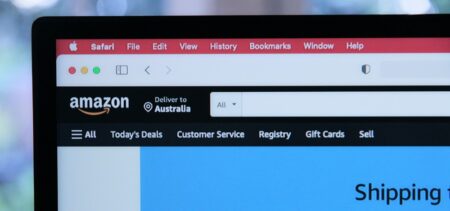Pricing strategies as part of product marketing directly impact profit. It’s a short-term effective tool when used for a limited amount of time and it presumes a prior market analysis. Usually the goal is to sell high quantities of the discounted products; therefore it is specific to large retailers, which turn to their suppliers for associated price discounts.
Loyalty discounts, seasonal discounts, promotional discounts, loss leaders (discounts intended to trigger other products’ sales), in-depth discounts, and coupons/vouchers discounts – these are some of the types of discounts used in the distribution channel.
What happens when the classical strategies are confronted with online sales? Do they change or adapt, and in relation to what key elements?
The credit crunch, followed by recession that preceded the debut of the current decade shaped customer behavior into increased price awareness and a more demanding attitude.
Challenges in pricing strategies:
• Online customers dispose of memory enhancing methods. Information can be digitally saved and later compared, even if it is no longer available on the brand page. This is an unattainable thing for physical stores’ customers, and it obliges the e-tailers to thread carefully when advertising the customers’ gain. The message conveyed should therefore be honest and consistent across all channels. High-low pricing strategies, for example, are excluded by default.
A Software Advice global survey for 2015 shows that discount is the leading marketing strategy, popularity-wise: 97% of the respondent retailers engage it, and 51% of the same respondents manage it via management software.
The most effective listed pricing strategies are, beside discounts:
bundle, below competition, manufacturer’s suggested retail price, odd pricing, price lining, dynamic pricing and the already mentioned high-low pricing.
Even by looking at these techniques and bearing in mind the limitless comparing and digital memory options of buying online, one could realize not all of them stand the e-commerce challenge. E-commerce retailers rely mainly on discount, below competition and bundle strategies (in this order.
• Another way of empowerment for digital customers is their online review option. Although a brand has a degree of control over its online image via the pages it owns/manages, what happens on the independent review websites or social networking platforms may affect the business, but it’s out of its direct control. As shown by a ZenDesk study, potential customers check for positive online reviews in a percentage of 90 out of 100 cases. Negative reviews determine 86% of the potential buyers to refrain from going on with the purchase. When introducing a pricing strategy, it will be judged by customers just as the products are judged, so try to make it seamlessly. Unstained boosting about your offer will only open it up to critics.
Handling online reviews and turning negative ones into a beneficial factor would be another e-commerce challenge
Especially if the brand is exclusively digitally represented, repairing the reputation damages takes a lot of patience and commitment. Depending on the particular negative reviews, responsibility should be accepted when necessary. Prune all fake reviews by petitioning for their removal. Offer a solution alongside the apology meant to validate the customer’s feelings, and employ good CRM skills. Be aware that any customer may become a reviewer and the online impact rates grow exponentially. Unlike physical stores, e-commerce’s virtual space is infinite and it is the perfect space for people to voice their opinions. Retailers should prepare a coherent negative reviews strategy and apply it whenever needed. Online reputation monitoring – also a must.
• Another internet temptation is its anonymity. It encourages customers to spread their feedback regardless of their capacities of analysis. But it can also stimulate e-tailers to post fake positive reviews. It is another delicate matter. Online visibility acts like a magnifying glass, and in many cases such pretend reviews are discovered to be staged. It does not bode well for the merchandisers when this happens. Review sites have their own methods of scanning for staged reviews, sometimes even legal matters may arise. If legally permitted, one might try this, but it should be done honestly and clever. Work on the qualities of your products and be truthful about the downsides – underlining their compensations. (e.g. not the best in the field at some feature, but the price is right for the overall capabilities).
E-tailers also have at their disposal means of using discounts effectively
Loyalty rewarding, promoting their products by offering them discounted to online influencers, abandoned shopping cart conversion or discounting in exchange for referrals are just a few of the specific tools.
• There are critical voices too, when it comes to ecommerce discounts. Shoppers’ conditioning, brand devaluating, un-coordinating them with the overall pricing strategy – these are all reasons to avoid online discounts. The proposed alternative would be dynamic pricing, based on the customer’s willingness to pay.
• The omnipresence and omni-connectivity of the virtual shopping space tend to take the discount concept’s edge off. Specialists discuss this phenomenon together with everyday low prices. Studies show that generally lower prices are a more effective strategy than occasional in-depth discounts.
Also called price-consistency, this second strategy serves customer loyalty and trust in the brand. EDLP (Every Day Low Price) is not practical for all types of retailers, but the general merchandise commerce benefits and is fit for it.
Recently, Amazon’s Prime Day raised a lot of attention
Competitors and potential customers equally reacted to the advertised big event. Post-event analyses have started to appear. Even though customers voiced their disappointment in the selection of items on offer, the numbers proved satisfactory for the company and could add up to 0.6% to July’s total. The company also valued its loyal customers, chose its date well and avoided overlapping with other sales events.
Compared to Alibaba Singles Day, Prime Day was overall a successful global event and showed great potential for future events. Performance overviews are all over the Internet and it represents a good case study of what digital discounts marketing can achieve in 2015.
Online price strategies are a challenge for retailers, and we’ve seen some of the reasons. But the same digital sensitivity manifested through public reviews, anonymity or comparison availability can benefit e-tailers threefold when understood and applied in marketing strategies. So e-commerce may raise the bar, but it is worth it.





























